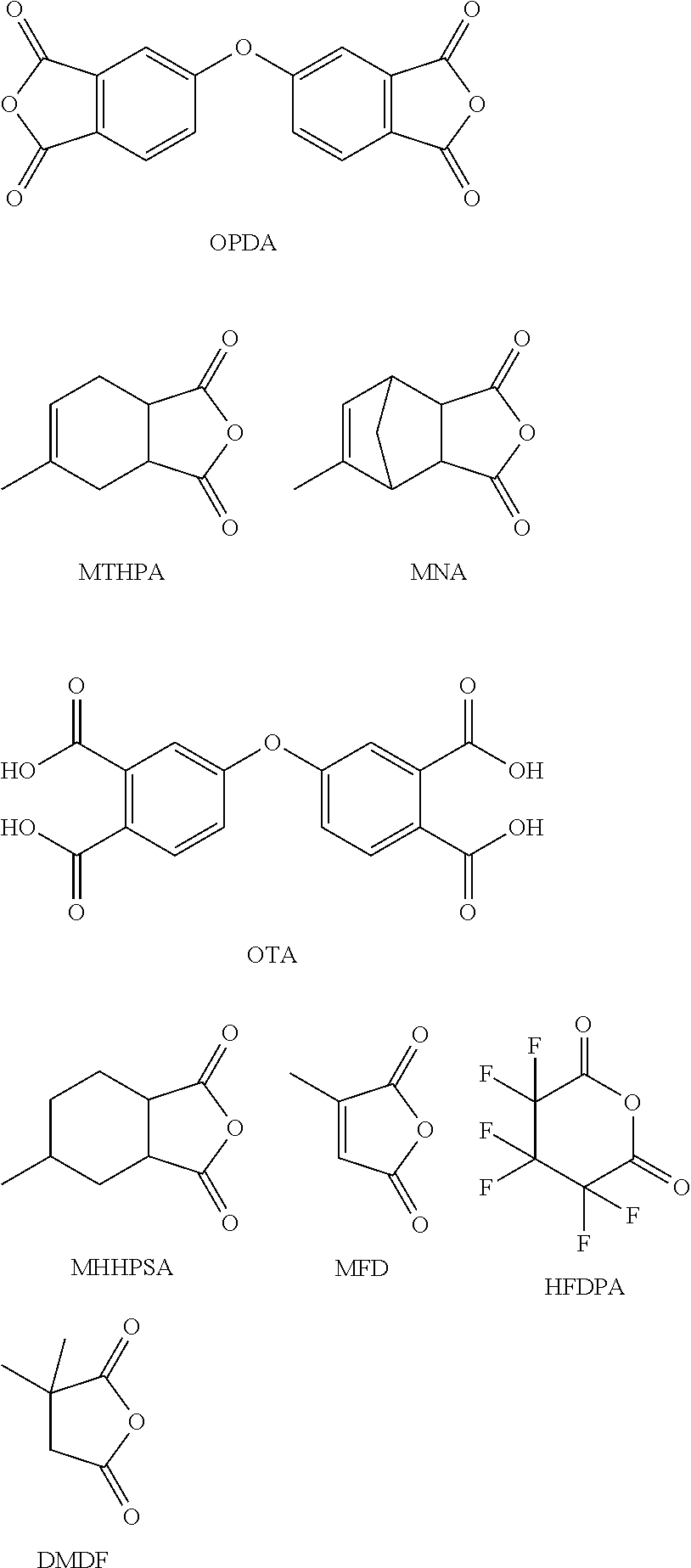Processing-friendly dianhydride hardener for epoxy resin systems based on 5,5'-oxybis(isobenzofuran-1,3-dione)
a technology of epoxy resin and dianhydride, which is applied in the field of compounding, can solve the problems of low thermal resistance and chemical resistance of the resultant products, skin damage extension, and high volatility of liquid amines, and achieves the effects of low temperature resistance and chemical resistan
- Summary
- Abstract
- Description
- Claims
- Application Information
AI Technical Summary
Benefits of technology
Problems solved by technology
Method used
Image
Examples
example 1
[0127]In a 100 ml beaker, at room temperature, 7.1 g of OPDA, 2.9 g of OTA and 10.0 g of MNA (corresponding to a mass of OTA of 16.9% of the sum total of the mass of OPDA and the mass of MNA) were mixed with one another. Subsequently, a wooden spatula was used to incorporate 10 g of the cycloaliphatic epoxy resin CY179 having the following structural formula:
[0128]so as to form a homogeneous composition.
[0129]10 g of the mixture thus obtained were transferred into a test tube, then the gel time at 170° C. was determined to DIN EN 16945, Sheet 1. The gel time was 27.33 min.
example 2
[0130]For comparison, the experiment was repeated without OTA. To this end, 10.0 g of OPDA and 10.0 g of MNA were mixed with one another in a 100 ml beaker at room temperature. Subsequently, a wooden spatula was used to incorporate 10 g of the cycloaliphatic epoxy resin CY179 so as to form a homogeneous composition.
[0131]10 g of the mixture thus obtained were transferred into a test tube, then the gel time at 170° C. was determined to DIN EN 16945, Sheet 1. The gel time was 68.42 min.
[0132]This showed that a distinct reduction in the gel time was already observed in the case of very small proportions of OTA in the mixture. This is attributable to the accelerating and completely surprising property of the OTA.
2. Examples 3-24 (Inventive)
Formulation
[0133]A 100 ml beaker was initially charged with 9.7 g of OPDA and 0.3 g of OTA. Thereafter, MTHPA or MNA was added stepwise in accordance with the amounts shown in Table 1 and the mixture was stirred at 23° C. for about one minute to give ...
PUM
| Property | Measurement | Unit |
|---|---|---|
| temperature | aaaaa | aaaaa |
| temperatures | aaaaa | aaaaa |
| melting temperature | aaaaa | aaaaa |
Abstract
Description
Claims
Application Information
 Login to View More
Login to View More - R&D
- Intellectual Property
- Life Sciences
- Materials
- Tech Scout
- Unparalleled Data Quality
- Higher Quality Content
- 60% Fewer Hallucinations
Browse by: Latest US Patents, China's latest patents, Technical Efficacy Thesaurus, Application Domain, Technology Topic, Popular Technical Reports.
© 2025 PatSnap. All rights reserved.Legal|Privacy policy|Modern Slavery Act Transparency Statement|Sitemap|About US| Contact US: help@patsnap.com


